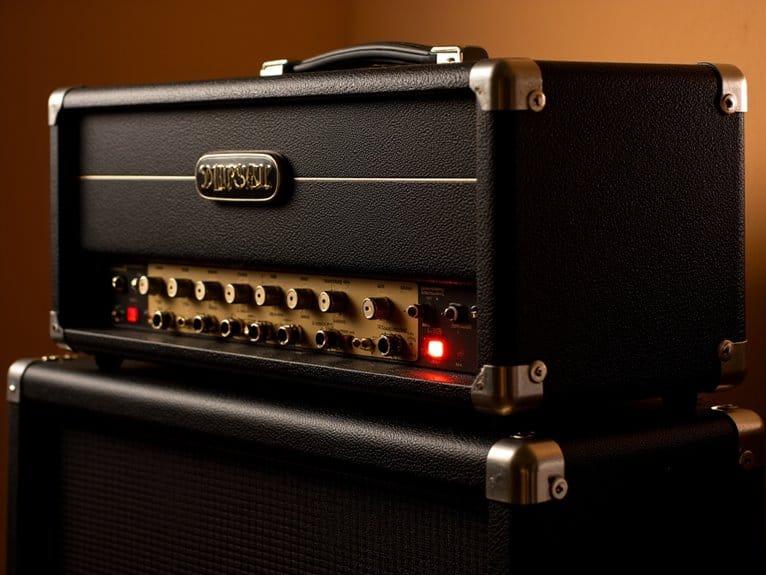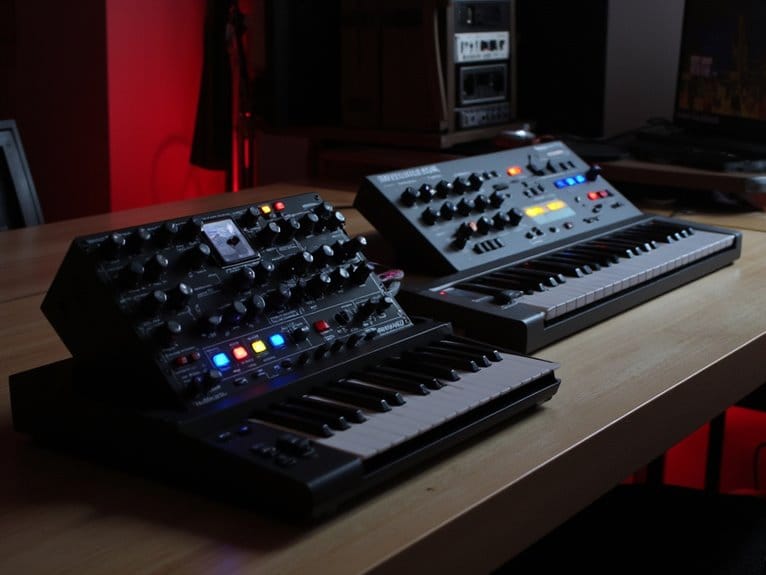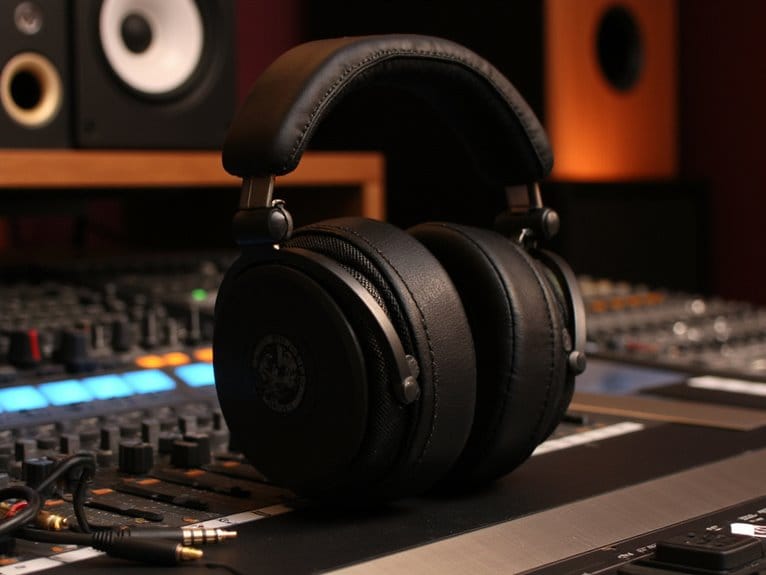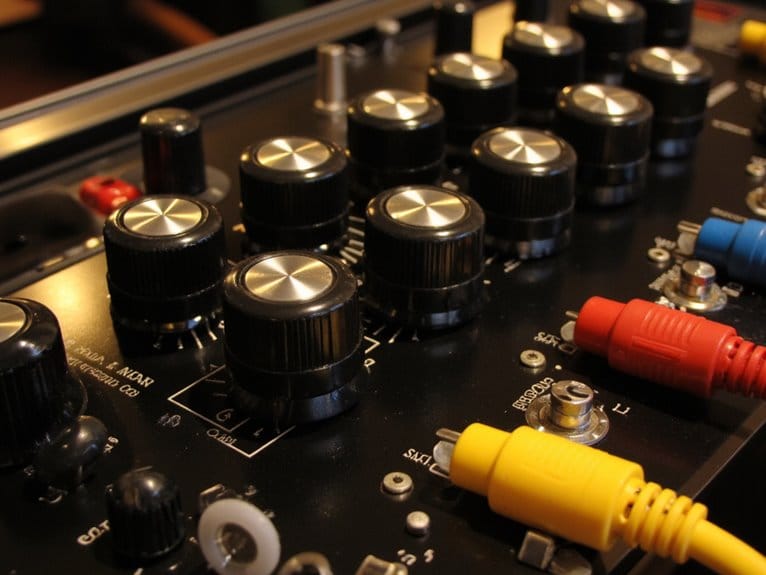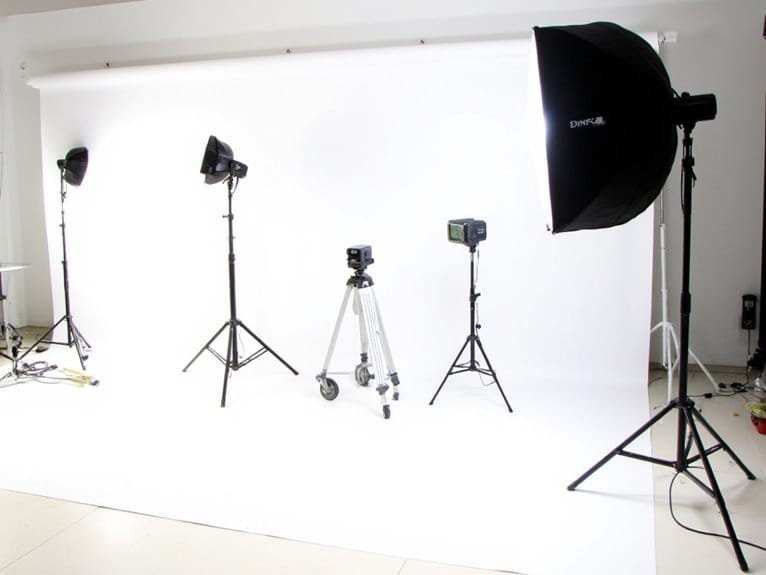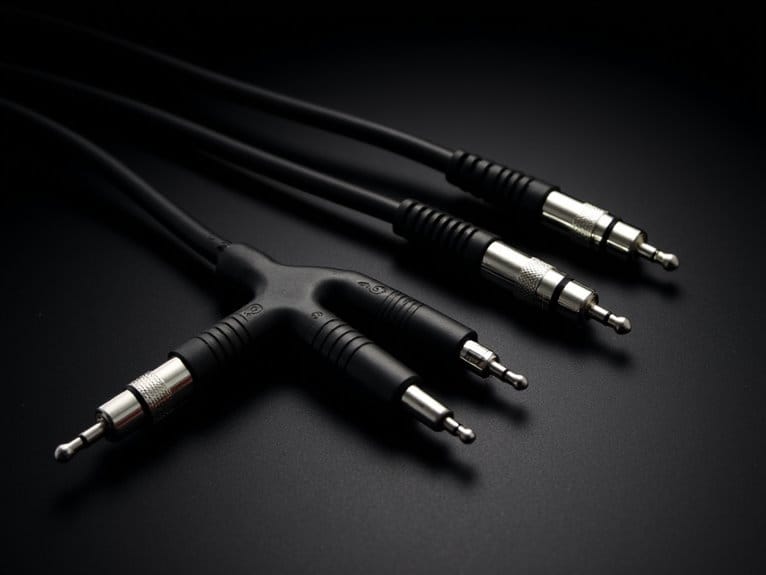Multi-Channel Guitar Amplifiers: Maximizing Tonal Versatility
You can access incredible tonal versatility by mastering your multi-channel amp’s distinct signal paths, each featuring separate preamp stages and gain structures that deliver everything from pristine cleans to high-gain distortion. I’ve found that proper footswitch programming and A/B/Y switching techniques let you seamlessly blend channels or switch instantly between sounds, while advanced features like preset management, MIDI control, and built-in effects expand your sonic possibilities even further than you might expect.
We are supported by our audience. When you purchase through links on our site, we may earn an affiliate commission, at no extra cost for you. Learn more.
Notable Insights
- Multi-channel amps feature separate signal paths with independent preamp stages, gain structures, and tone controls for diverse sounds.
- Clean, overdrive, and high-gain channels provide instant access to pure tones, vintage crunch, and modern metal distortion.
- Footswitch programming and A/B/Y switching enable seamless channel changes and simultaneous amp blending for enhanced tonal complexity.
- Advanced features like preset management, MIDI control, and built-in effects expand sonic possibilities beyond basic channel switching.
- Independent EQ sections and effects loops per channel allow precise sound customization for multiple genres within single performances.
Understanding Multi-Channel Amp Architecture and Signal Flow
Three distinct signal paths living inside one amplifier chassis – that’s the elegant engineering solution that defines multi-channel guitar amplifiers, where you’ll find separate preamp stages, gain structures, and tone controls all working together to deliver everything from crystalline cleans to crushing high-gain tones at the flip of a switch. This versatility allows musicians to seamlessly adapt their sound to suit various styles and genres. Understanding how to pair different setups effectively, including matching amplifiers to guitar types, can enhance the overall tonal experience. Whether it’s a warm jazz tone or a searing rock sound, these amplifiers provide the creative flexibility needed for any performance.
When you trace the signal flow from your guitar’s output jack through these sophisticated circuits, you’ll notice how each channel maintains its own cascading gain stages with dedicated attenuation controls between them. The dual-channel functionality allows guitarists to access both clean and distortion tones instantly, providing the versatility needed for everything from intimate practice sessions to live performance scenarios.
The circuit design employs relay-based or electronic switching mechanisms to maintain signal integrity while you navigate between channels, ensuring that whether you’re dialing in a shimmering clean tone or pushing into saturated territory, each path delivers consistent performance without unwanted noise or signal degradation. Modern multi-channel amplifiers often feature overdrive switches that allow seamless transitions between clean and distorted tones, giving players instant access to contrasting sonic territories. Each channel typically features impedance matching through pull-down resistors at the input stage to ensure proper signal transfer and prevent unwanted noise artifacts when switching between different pickup configurations. Coupling capacitors positioned between gain stages allow the AC audio signal to pass freely while blocking DC voltage, maintaining proper DC isolation throughout the signal chain.
Channel Types and Their Specific Tonal Applications
Five distinct channel types form the tonal backbone of modern multi-channel amplifiers, each engineered with specific circuit characteristics and EQ voicings that’ll shape your sound in dramatically different ways depending on your musical needs.
Clean channels deliver pure, uncolored output with minimal distortion, perfect for jazz and country applications where clarity matters most.
Clean channels preserve signal integrity with transparent amplification, making them essential for genres demanding pristine clarity and dynamic response.
Overdrive and distortion channels utilize adjustable gain stages for rock and metal, offering extensive channel dynamics from subtle breakup to heavy saturation.
Boutique vintage designs recreate classic ’50s circuits with warm, organic tones and touch-sensitive response.
High-gain channels provide multiple preamp stages for modern metal precision, while clean/crunch hybrids bridge clean and distorted territories.
This variety enables thorough tonal customization across genres.
Switching and Blending Techniques for Enhanced Performance
Having multiple channels at your disposal means nothing if you can’t switch between them effectively during a performance, and that’s where mastering switching and blending techniques becomes the difference between a seamless show and a fumbling disaster.
Footswitch programming allows you to customize your switching schemes, whether you’re toggling between clean and dirty channels or engaging momentary channel changes for dynamic playing. I’ve found that assigning a single footswitch to alternating amp blocks prevents signal bleed while maintaining tonal integrity.
When using multiple amps, impedance matching becomes critical for safe operation, and you’ll want to power down equipment before making connections.
A/B/Y switches enable simultaneous amp blending, creating complex tonal layers that single-amp setups simply can’t achieve.
Advanced Features That Expand Sonic Possibilities
While switching techniques form the foundation of multi-channel operation, today’s advanced amplifiers push sonic boundaries through sophisticated features that transform how we approach tone creation and performance dynamics.
Modern multi-channel amps integrate sophisticated preset management systems that store your custom settings across channels, enabling instant recall of complex configurations during live performances. Built-in USB audio interfaces eliminate additional recording hardware, while MIDI control opens automation possibilities I never imagined possible years ago.
- Amp modeling and cabinet simulation deliver authentic tube responses across multiple power amp configurations
- Onboard effects with flexible effect routing provide pre- and post-amp placement options without external pedals
- Power scaling down to 1 watt maintains tone character at bedroom volumes
- Stereo amplification capabilities create immersive soundscapes with compatible modelers and stereo effects
The versatility of wattage settings allows players to achieve optimal tone and dynamic range across different performance environments, from intimate home practice sessions to larger venue applications. Just as pickup configurations fundamentally shape the signal entering your amplifier, these advanced amp features provide the tools to sculpt and refine that signal into your signature sound.
Weighing the Benefits and Trade-offs of Multi-Channel Systems
These remarkable features showcase the pinnacle of amplifier technology, but they also highlight the fundamental question every guitarist faces: do multi-channel systems actually improve your playing experience, or do they complicate what should be a straightforward relationship between you and your tone?
| Benefits | Trade-offs |
|---|---|
| Instant channel flexibility between clean, crunch, and lead tones | Complex circuitry increases potential failure points |
| Tonal diversity supports multiple genres within single performance | Higher cost compared to single-channel alternatives |
| Independent EQ and effects loops per channel | Reduced effectiveness as pedal platform |
| Quick switching without manual pedal adjustments | Larger size and weight impact portability |
| Tailored voicings for different venues and styles | Potential tone compromise through shared components |
The answer depends entirely on your playing style, venue requirements, and workflow preferences.
Frequently Asked Questions
How Do I Prevent Noise When Switching Channels During Live Performances?
You’ll prevent channel switching noise by using a noise gate pedal in your signal chain, ensuring proper grounding between your amp and effects, and employing high-quality shielded cables to minimize electromagnetic interference during performances.
Can I Use Different Speaker Cabinets for Each Channel Simultaneously?
You can route different cabinets to separate channels if your amp has individual outputs. Guarantee proper speaker cabinet compatibility and impedance matching. This setup creates distinct channel performance differences, allowing unique tonal characteristics for each channel simultaneously.
What’s the Best Way to Match Volume Levels Between Clean and Distorted Channels?
You’ll achieve volume balancing by adjusting individual channel volumes rather than master volume, preserving tonal consistency. Focus on perceived loudness in your room, boost mids on distorted channels, and use inline volume pedals for precise control.
How Do I Integrate External Pedals With Multi-Channel Amp Effects Loops Effectively?
Use strategic pedal placement: put gain-based effects before your amp input, place time-based effects in the loop. Adjust loop settings to match channel levels and preserve your amp’s natural tone switching capabilities.
Which Multi-Channel Amps Work Best for Home Recording at Low Volumes?
You’ll want tube amps like Marshall’s DSL1CR or Mesa’s Mark VII for home recording at bedroom levels. They offer multiple channels with proper tube saturation while maintaining low volumes through power scaling and silent recording outputs.
On a final note
You’ve now got the knowledge to navigate multi-channel amplifiers effectively, understanding how channel architecture, switching methods, and advanced features shape your sound. While these amps offer incredible versatility through multiple gain stages, EQ sections, and effect loops, they’ll require more investment and learning time than single-channel alternatives. Choose based on your actual needs-not just features-and you’ll find the right balance between complexity and musical expression.

